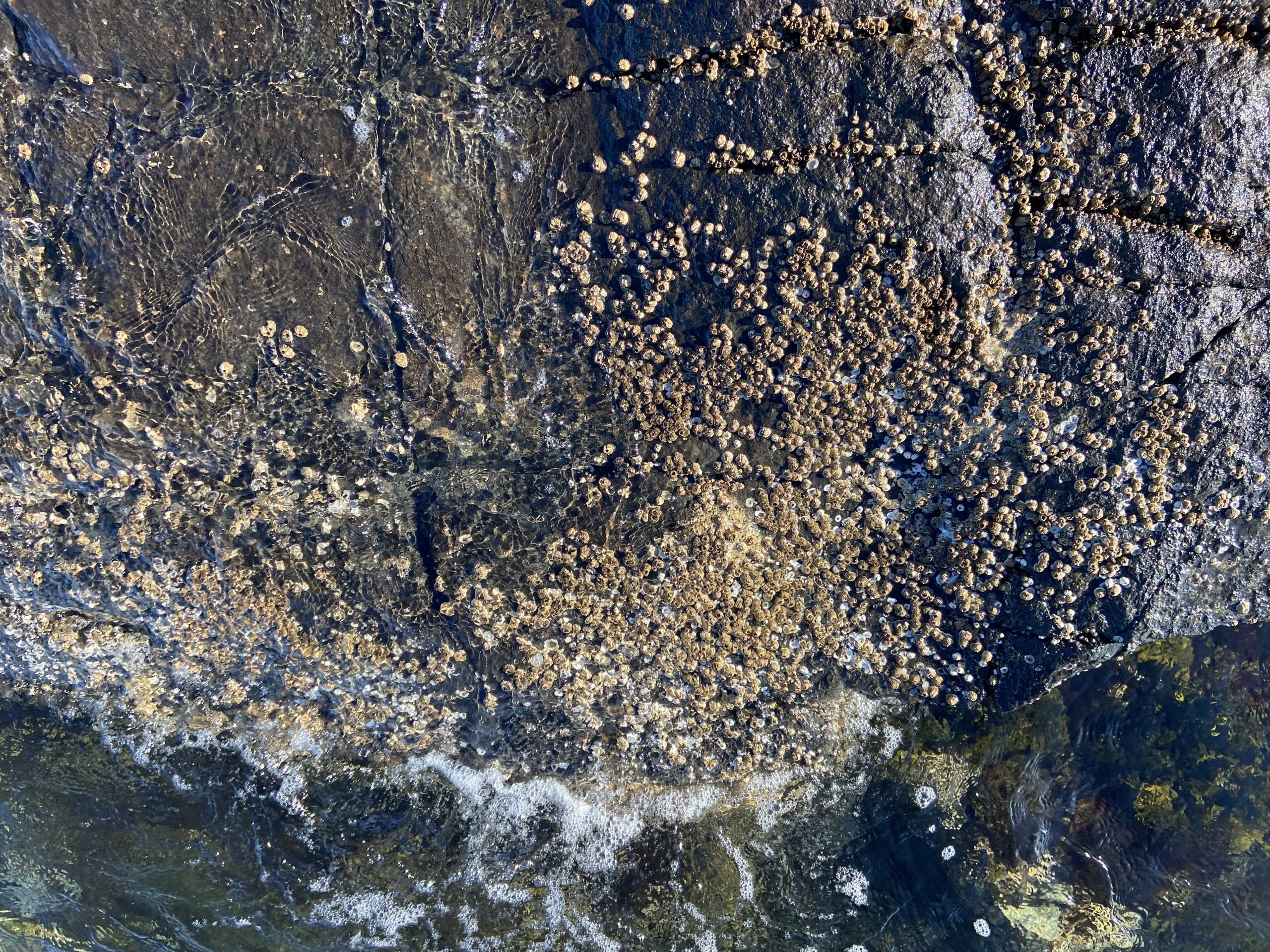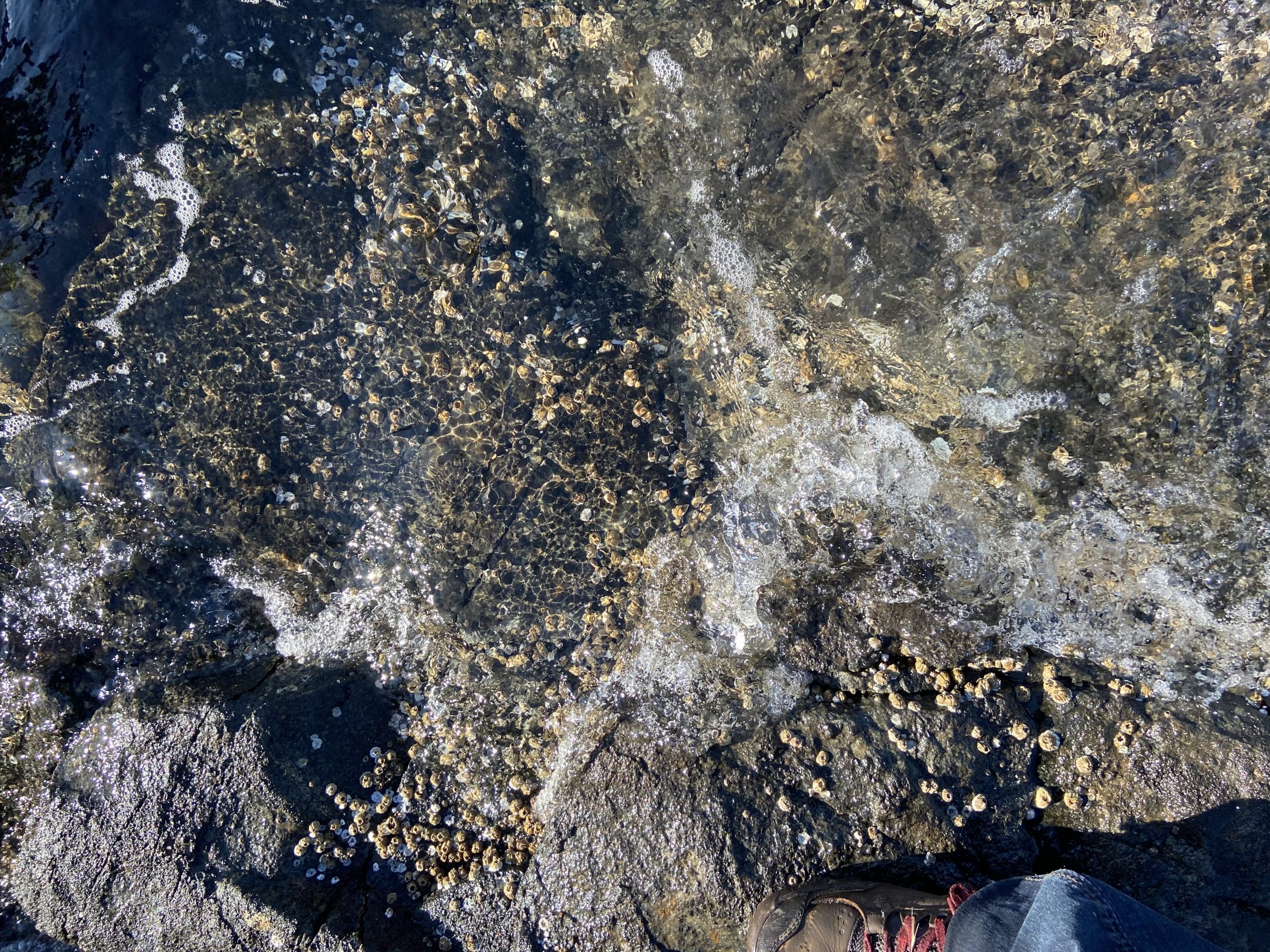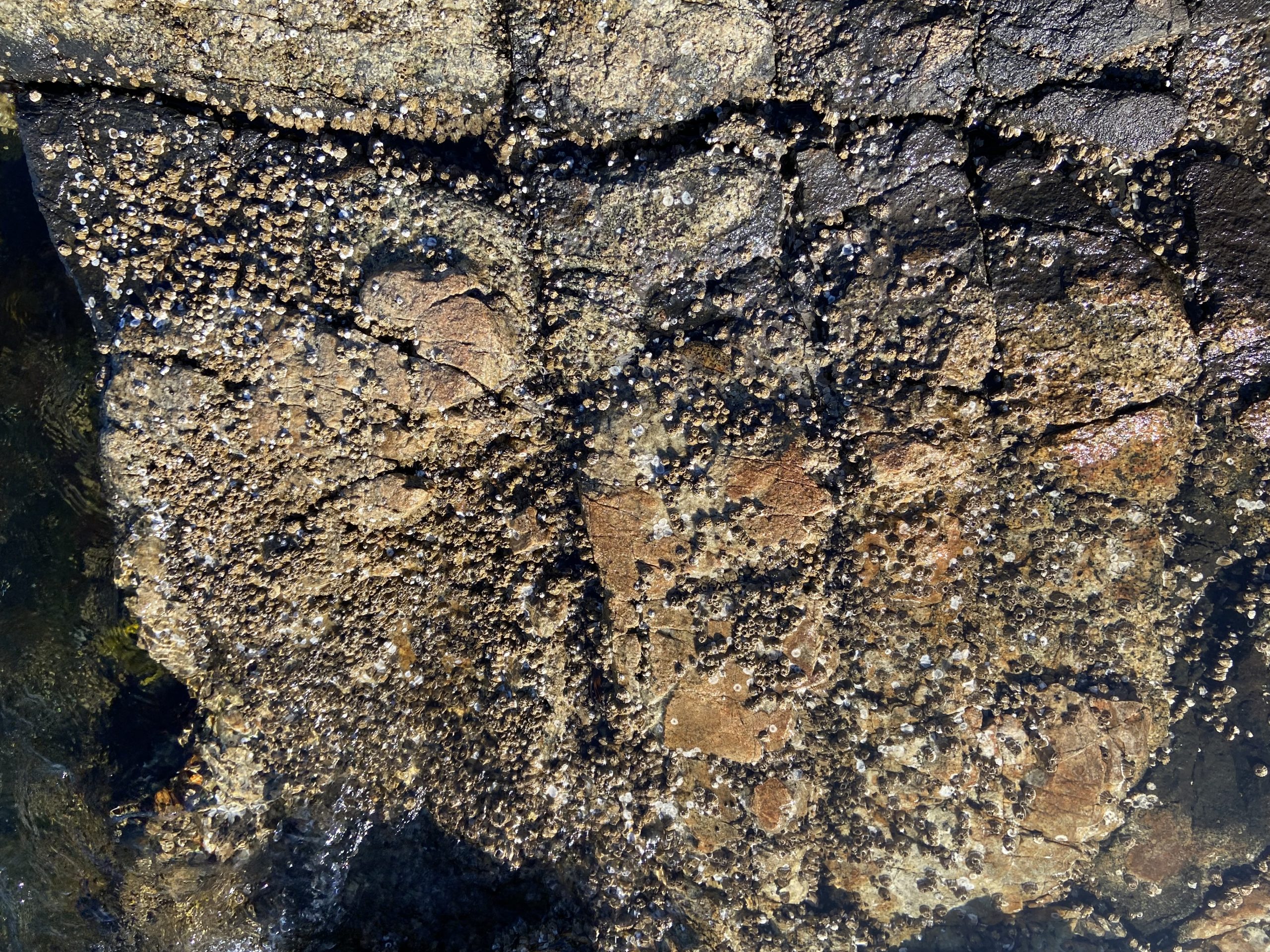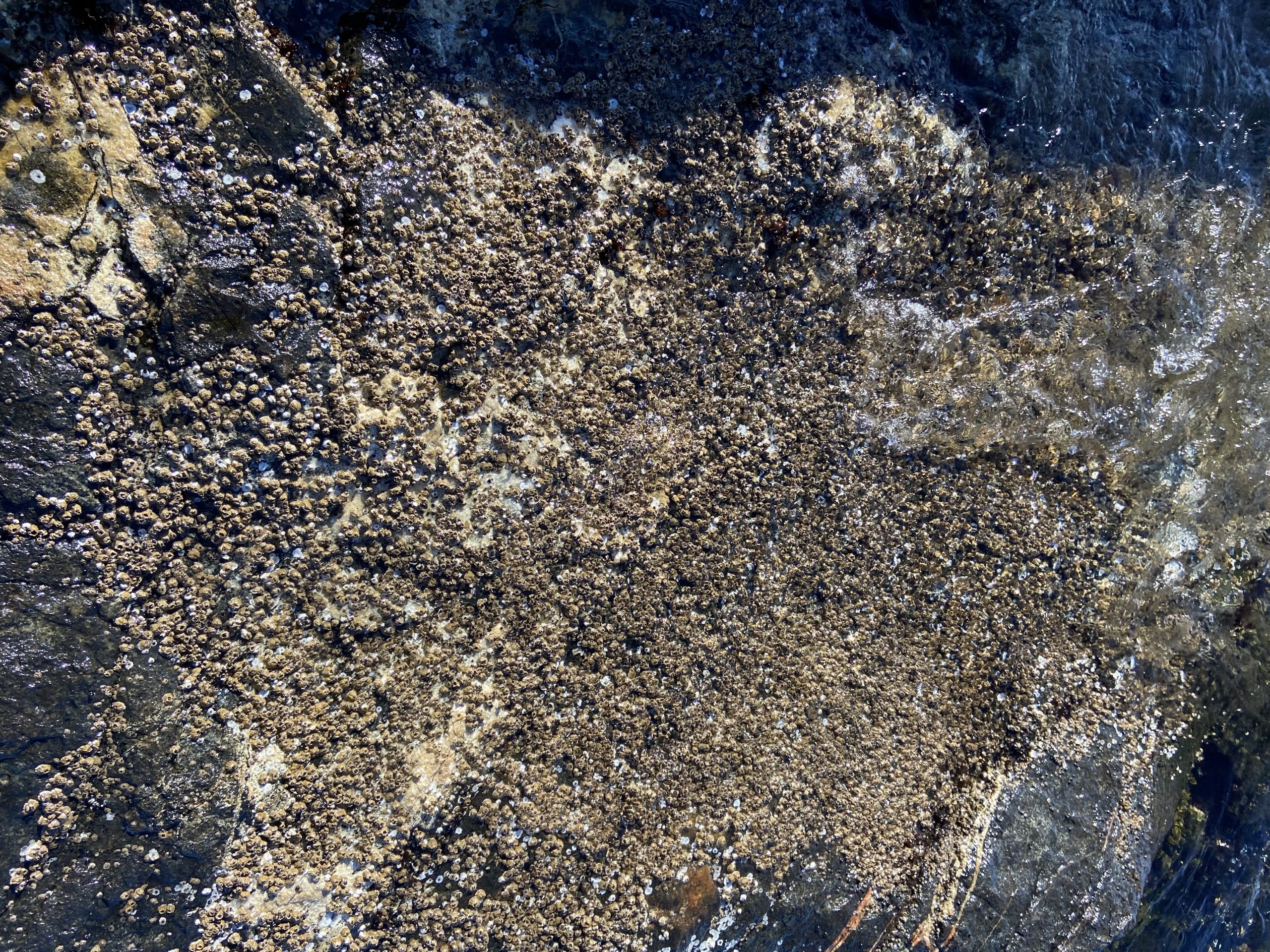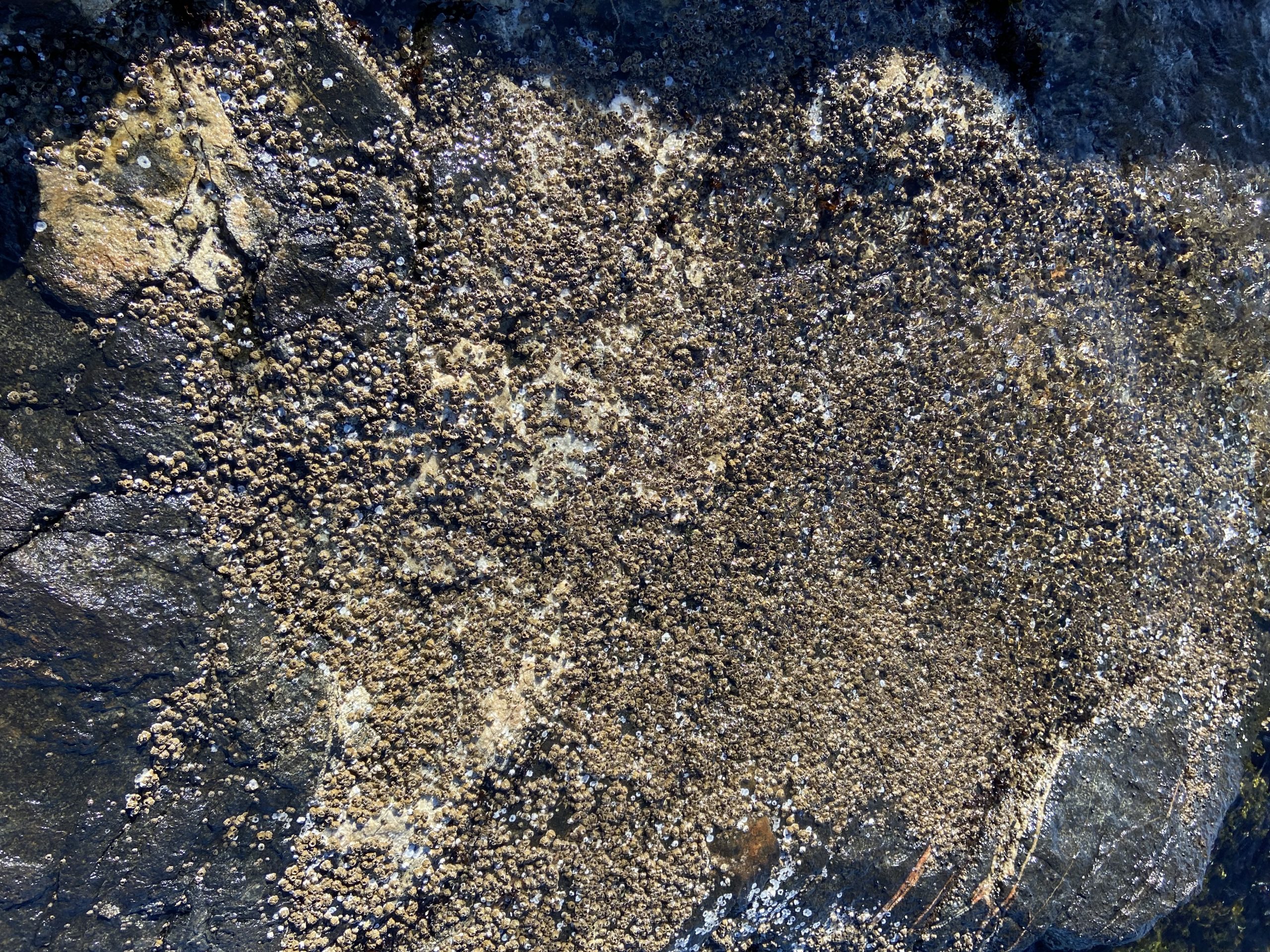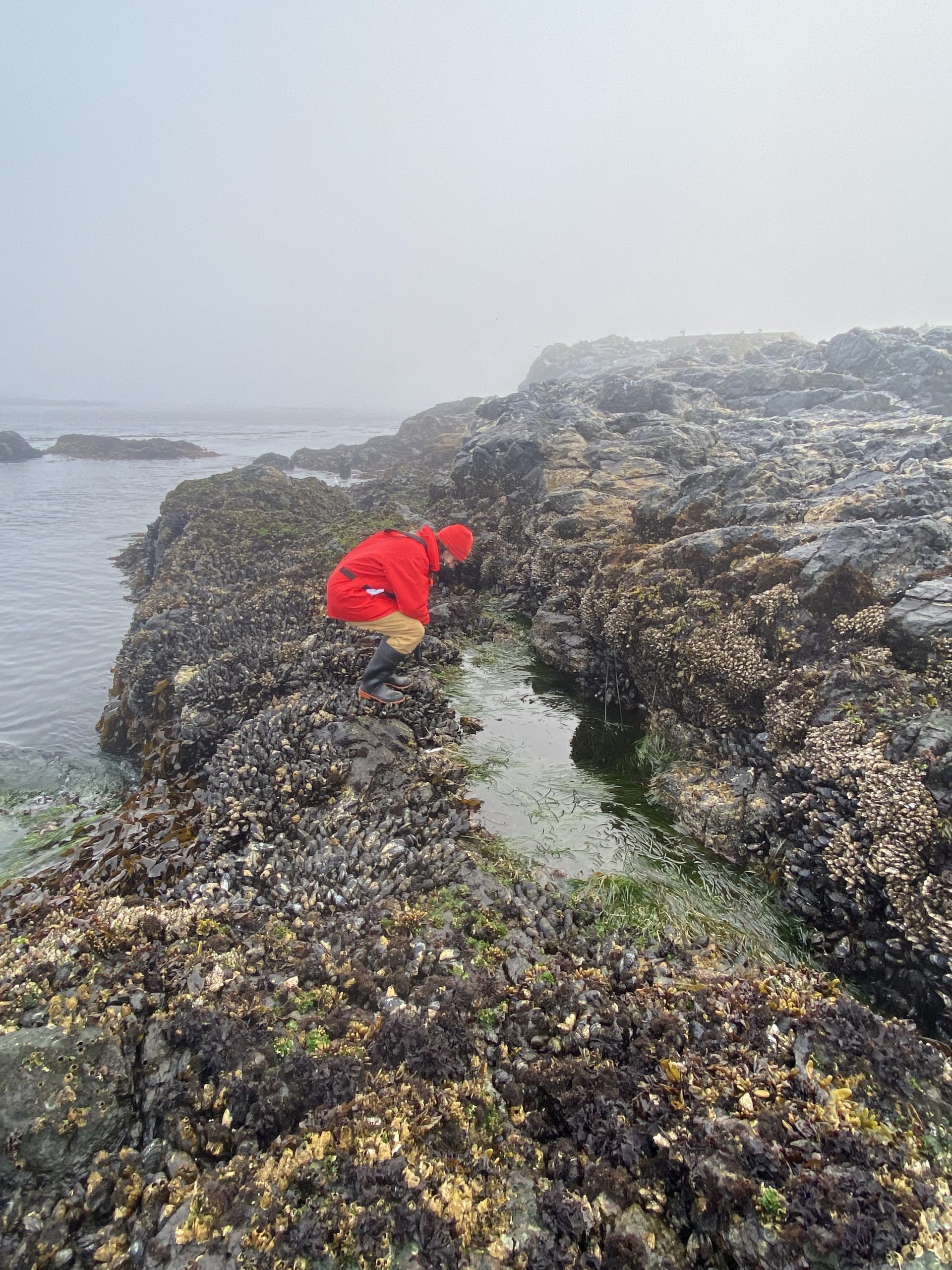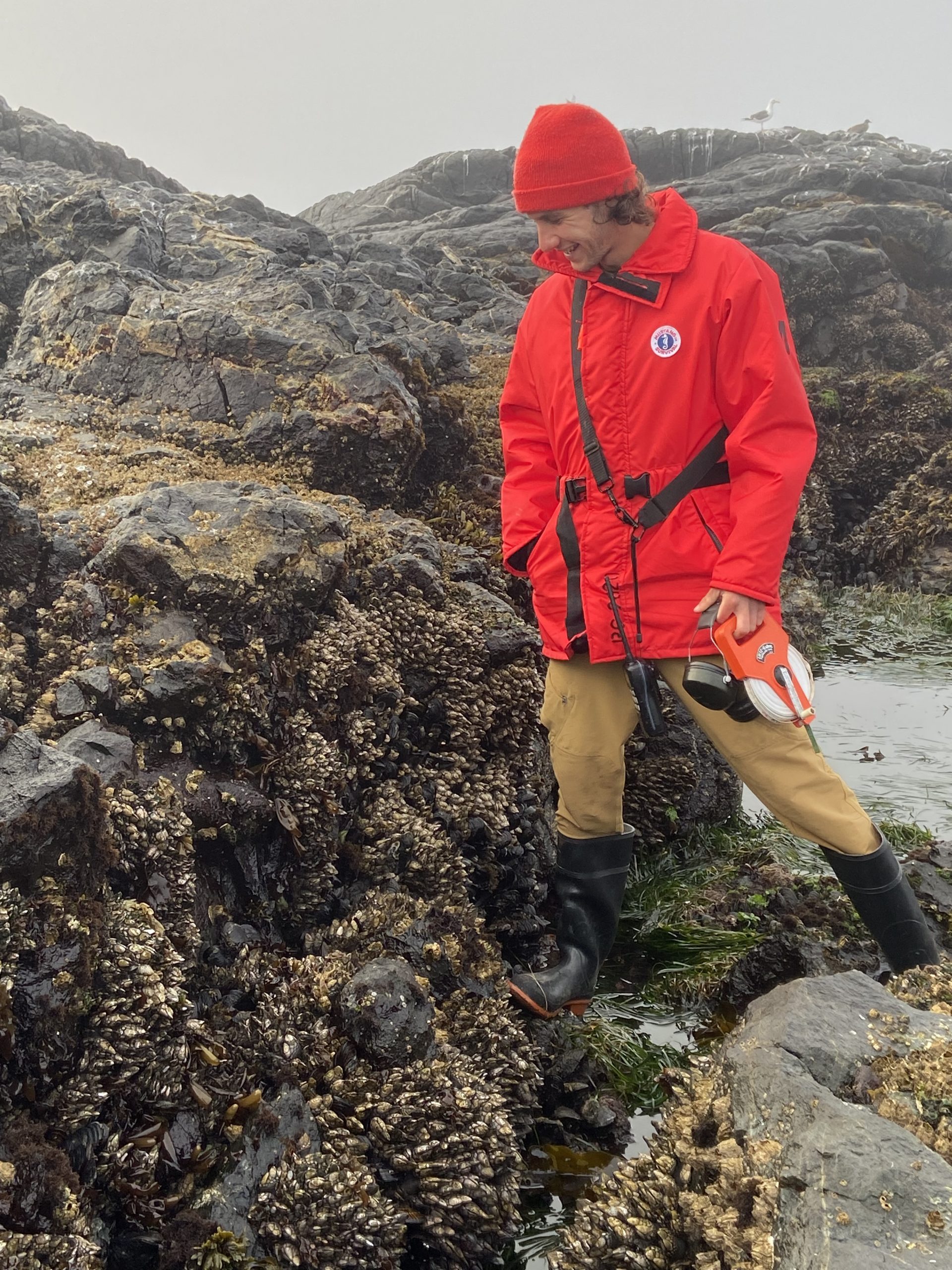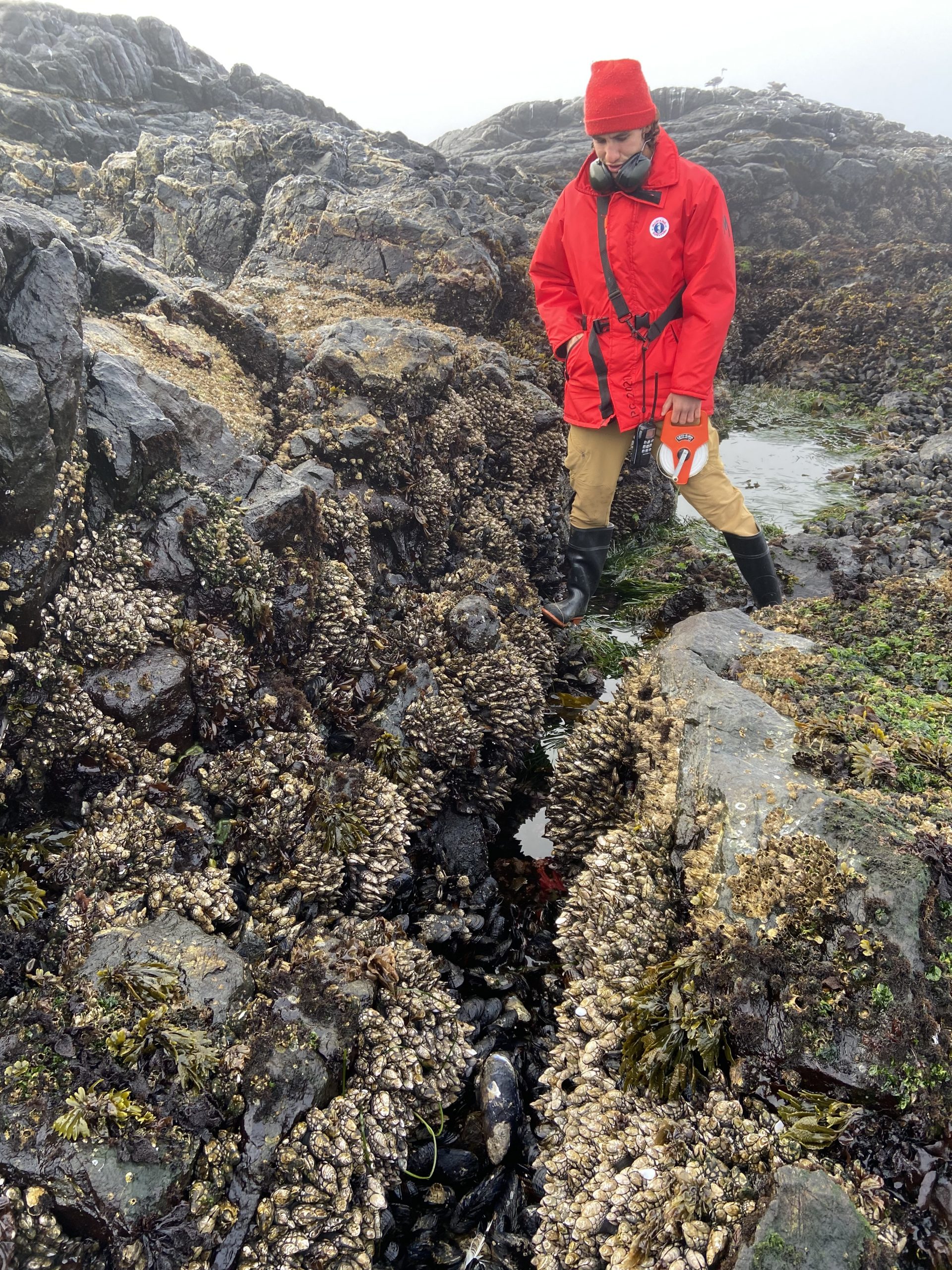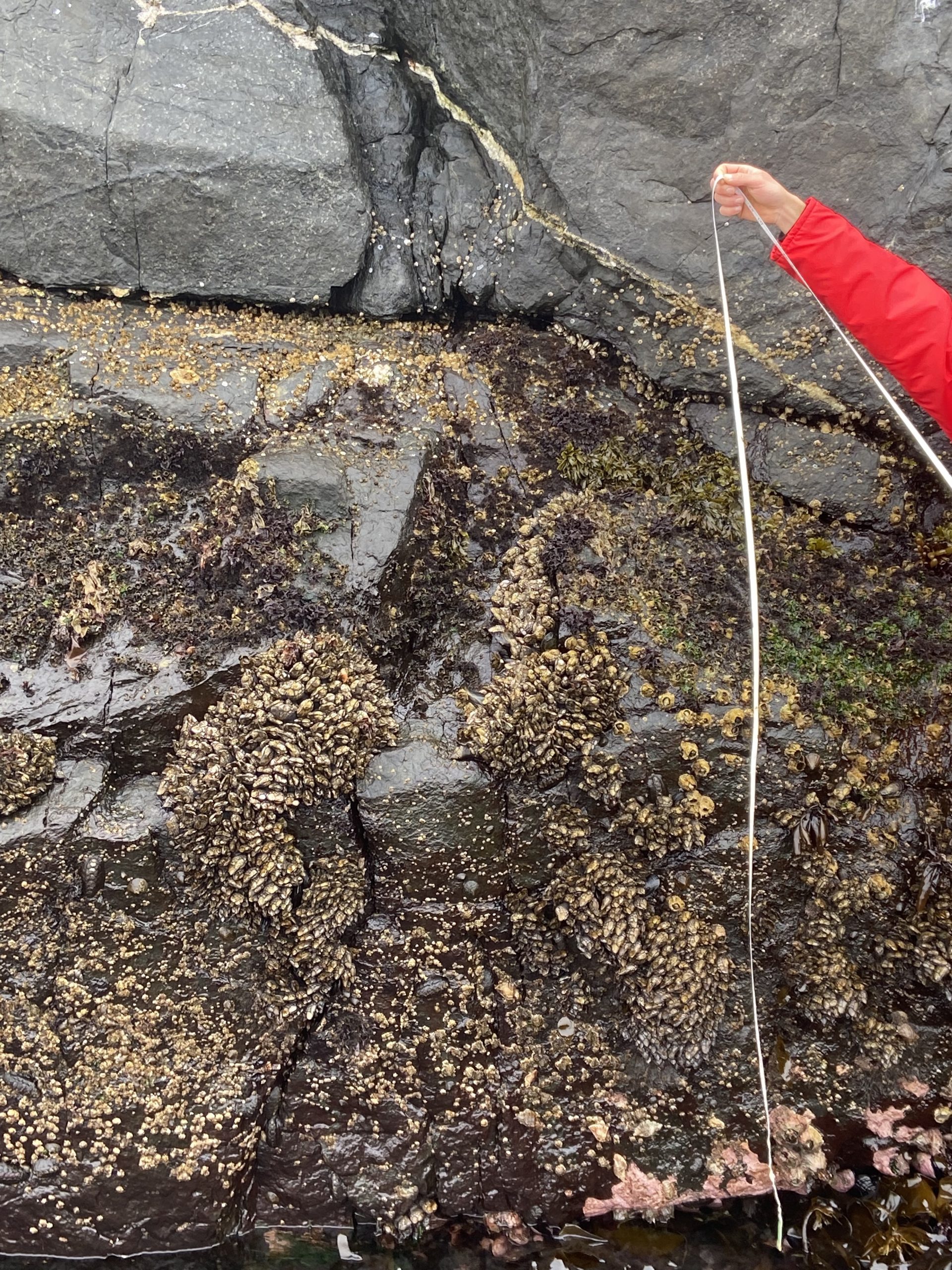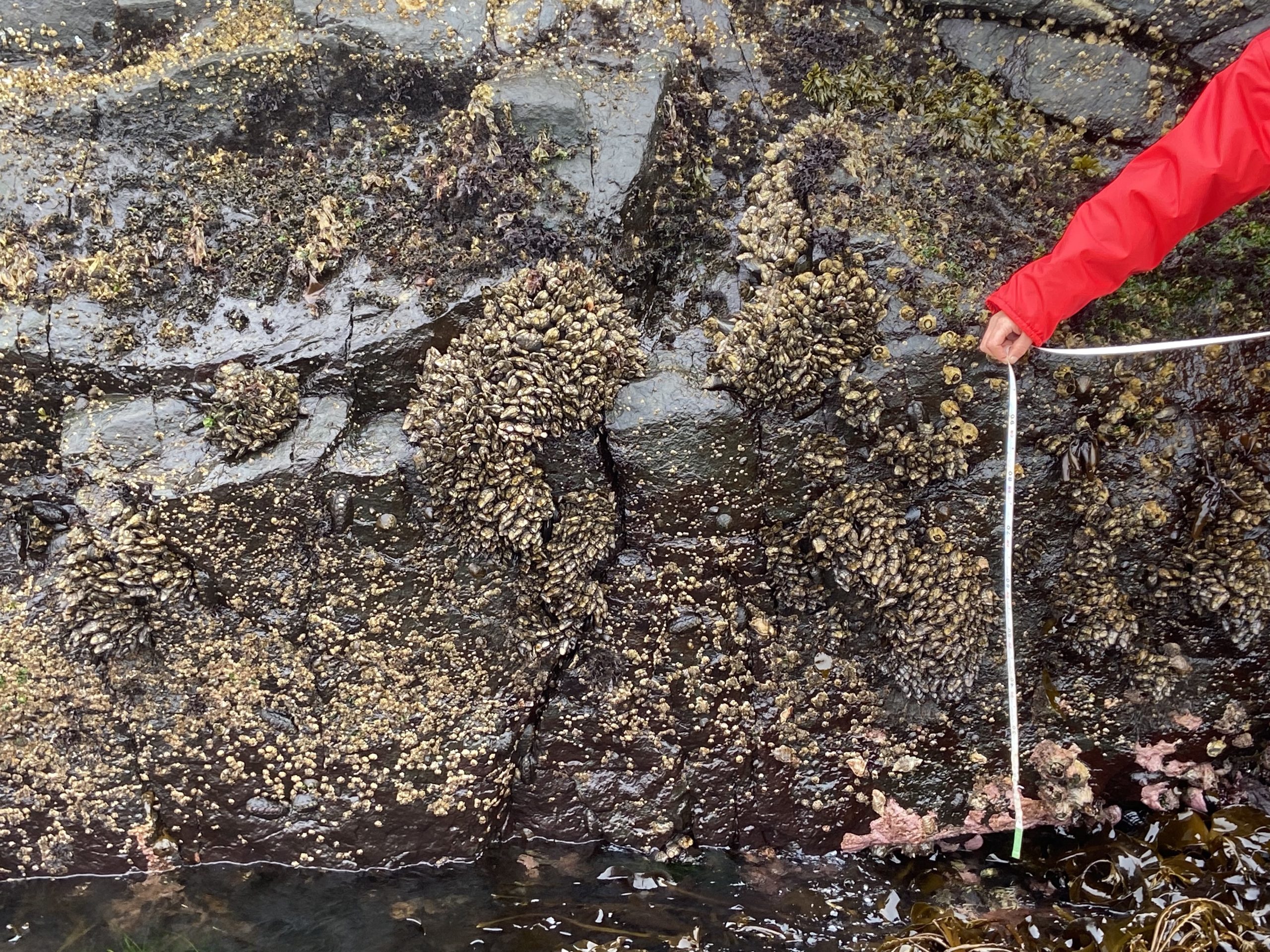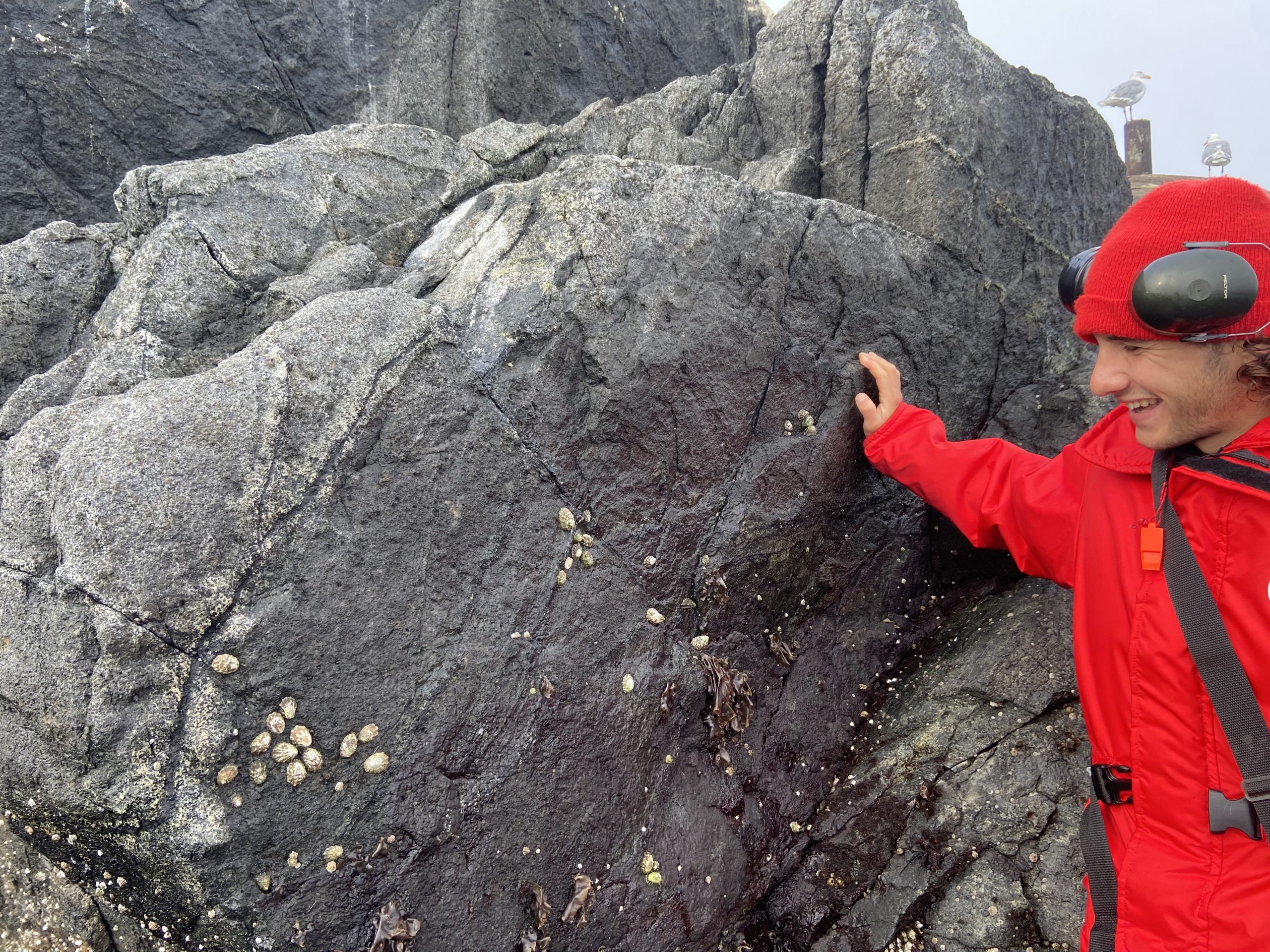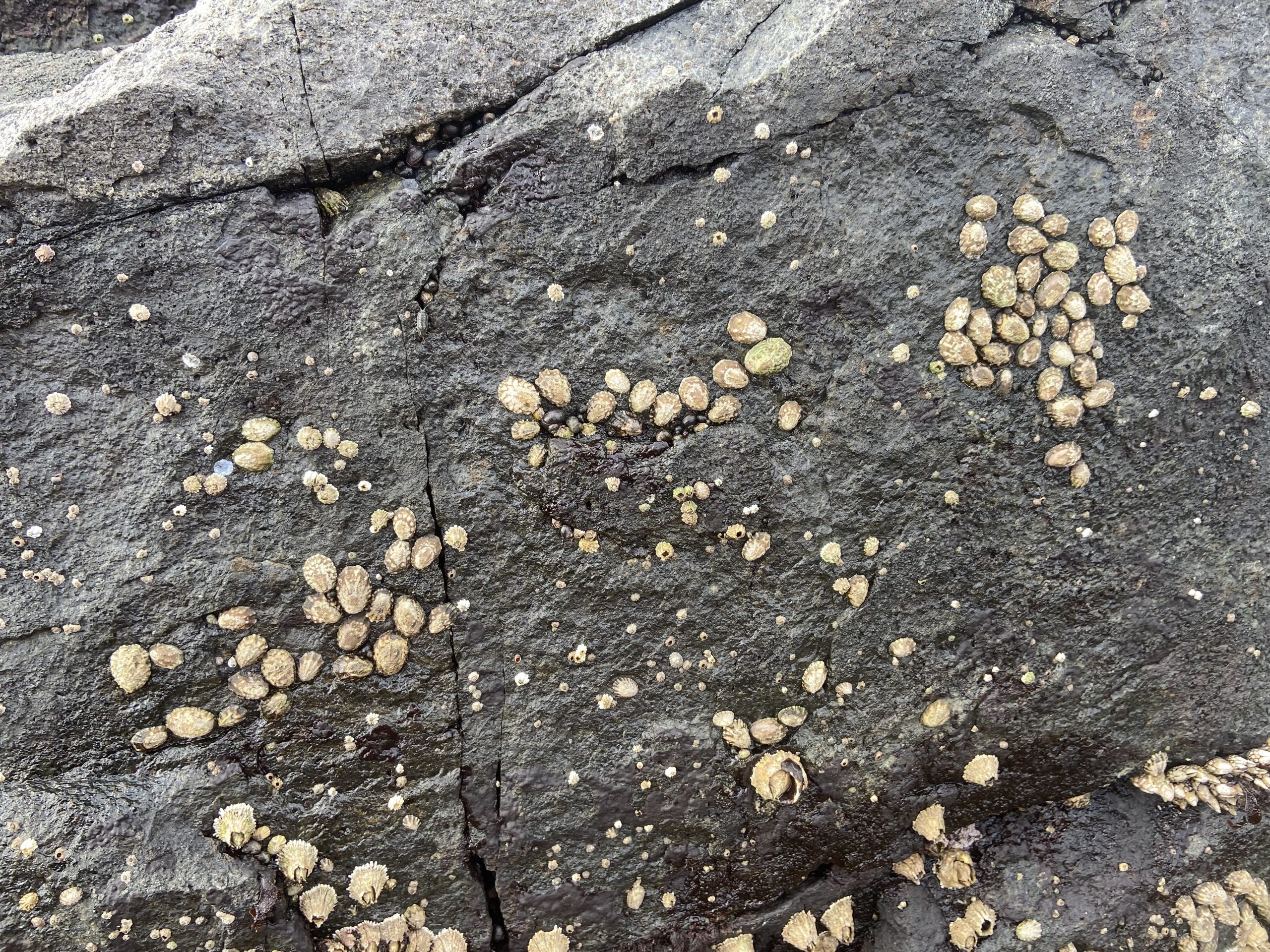Watden’s Report, September 3, 2021
I was fortunate to be able to get out to Race Rocks on one of the last morning low tides of the season. I wanted to revisit intertidal locations around the island in order to take photos of belt transects in locations I had recorded with baseline studies back in May of 1995. Photographic transects are valuable records in the event of changes that may happen along coastlines, usually caused by humans and/or by extreme weather events .
Images taken in 1995 can be seen in this index on transects: https://racerocks.ca/ecology/ecological-monitoring/
The belt transect files with images will be linked here when they have been processed :
Peg 6 Peg5: Peg 5a Peg 5b Peg 14a, Peg 14b Peg 115.
I was fortunate to have the assistance of Cedric Torres, the ecoguardian in doing the work on the transects.
At this time of year the island is populated by many young glaucous-winged gulls, some fully fledged and other son various states of maturity. There were also a number of mortalities around the island which is typical for this time of year in a breeding colony. In the following videos a number of behaviours of the chicks are shown .
Harbour seals with pups are hauled out on the southern most reef, note the current was still ebbing in this video.
The California and Stellers sea lions have started coming back in large numbers. typically the Californias outnumber the Stelllers at this time of year.
Beneath the tower, the Californians( barking) are predominant: but there is alos a mix of the growling Stellers.
On the East side cove a large group of Californian Sea lions were hauled out. The ones here were very skittish, any movement near the east end of the house would startle them
.
Other observations : two orcas in Race Passage ( surprizingly with no whale watching boats nearby. The nice weather on Sept 3 brought out many whale watching boats and as usual they approach closer to the north side in front of the docks than necessary and well within the distance for viewing marine mammal colonies. The sea lions on that side are more habituated to the presence of humans and these boats than on other parts of the island, but many still go into an alert stage when the boats pass by.
Only a few pelagic cormorants were seen on the south west tip of the island.
The Calendula escapes from gardens of lightkeepers over 50 years ago still exist along the pathways, although the dry summer has been challenging. I was able to make a new species observation of these green blow flies on the flowers.
This summer with the heat dome experience on Vancouver Island there have been reports of damage to intertidal life. I took these images of high intertidal level barnacles in the arintertidal between peg 14 and 15. which show very little damage from this event,
We checked out Anita’s pool #6 . The intertidal life in the area has been unchanged for decades.
On the west side of the cliff near peg 5 , we took these images on the vertical rock face as records of barnacle distribution:
And near peg 15 we noted these finger limpets in a shaded rock at an extreme high intertidal elevation.
- Note peg 15 in upper part of photo
- Finger Limpets
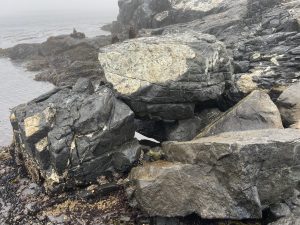
And a follow-up photo of The ill-fated tidepool #13 which was readjusted in the hurricane of 2006

